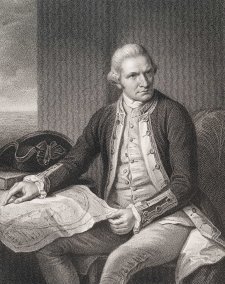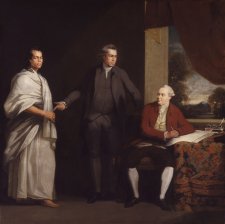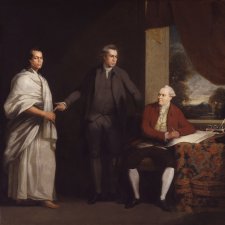- About us
- Support the Gallery
- Venue hire
- Publications
- Research library
- Organisation chart
- Employment
- Contact us
- Make a booking
- Onsite programs
- Online programs
- School visit information
- Learning resources
- Little Darlings
- Professional learning
His British friends misunderstood his name to be Omai, which ran together his formal presentation as ‘O Mai’ (it is Mai). Born into the middling classes on the sacred island of Ra‘iatea, Mai (c.1753–c.1779) was ten years old when Bora Borans invaded his island and forced his family to flee to Tahiti. His father was killed in the battle, and forever afterwards Mai sought to reclaim his ancestral lands and inheritance. As a teen, he witnessed the arrival Samuel Wallis’s Dolphin voyage of 1768, and he later followed the crew of Cook’s Endeavour expedition when it toured in 1769 (though none remembered meeting him then). Mai was on the island of Huahine (midway between Ra‘iatea and Tahiti) when Cook stopped during his second expedition in 1773. Here, Mai put into train a long-hatched plan to befriend the British crew, travel with them to their homeland, and acquire some of the notorious weaponry he had previously seen Britons use. He believed British arms could help him regain Ra‘iatea. Cook was reluctant to take Mai, doubting he was quite the high-born chiefly example that would best represent Pacific Islanders back home. But by the time Cook’s two vessels departed Huahine, Mai had won over most of the able-seamen and officer Tobias Furneaux convinced Cook that Mai would be helpful as well as boost morale. William Hodges’ subsequent sketch of Mai was to be one of the closest likenesses of him undertaken by a British artist.
Collection: National Portrait Gallery
Purchased 2010
William Hodges (age 33 in 1777)
James Caldwall (age 38 in 1777)
Omai (age 27 in 1777)



On one level The Companion talks about the most famous and frontline Australians, but on another it tells us about ourselves.



A focus on Indigenous-European relationships underpins Facing New Worlds. By Kate Fullagar.



Representations of the inhabitants of the new world expose the complexities of the colonisers' intentions.